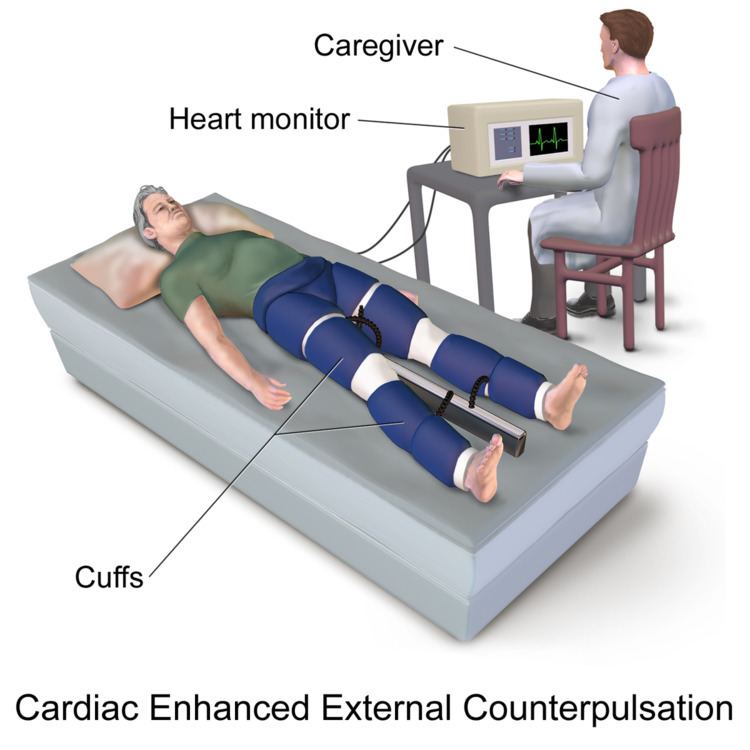 | ||
External counterpulsation therapy (ECP) is a procedure performed on individuals with angina or heart failure or cardiomyopathy in order to diminish symptoms of ischemia, improve functional capacity and quality of life. In various studies, ECP has been shown to relieve angina, and decrease the degree of ischemia in a cardiac stress test.
Contents
Method
While an individual is undergoing ECP, he/she has pneumatic cuffs on his or her legs and is connected to telemetry monitors that monitor heart rate and rhythm. The most common type in use involves three cuffs placed on each leg (on the calves, the lower thighs, and the upper thighs (or buttock)). The cuffs are timed to inflate and deflate based on the individual's electrocardiogram. The cuffs should ideally inflate at the beginning of diastole and deflate at the beginning of systole. During the inflation portion of the cycle, the calf cuffs inflate first, then the lower thigh cuffs and finally the upper thigh cuffs. Inflation is controlled by a pressure monitor, and the cuffs are inflated to about 200 mmHg.
When timed correctly, this will decrease the afterload that the heart has to pump against, and increase the preload that fills the heart, increasing the cardiac output. In this way, ECP is similar to the intra-aortic balloon pump (IABP). Since it increases pressure in the aorta while the heart is relaxing (during diastole) ECP also increases blood flow into the coronary arteries, which also occurs during that phase.
Physiological considerations
One theory is that ECP exposes the coronary circulation to increased shear stress, and that this results in the production of a cascade of growth factors that result in angiogenesis. ECP is a rehabilitation process that provides mechanical external cardiac assistance on a consistent regimen resulting in significant improvement in energy and exercise tolerance much like an exercise program. By restoring oxygenated blood flow, there are abundant benefits to the body. This restoration of nutrient rich blood flow revives tissue in parts of the heart and body that have become 'stunned' or 'hibernated' due to restricted or blocked blood flow. The heart benefits greatly as patients will see an improvement in structure, strength (contracility) and a reduction in afterload (workload) due to the reduction in systemic vascular resistance. Patients will see improvements in symptoms of chest pain, shortness of breath, chronic fatigue (tiredness) as well as a significant improvement in exercise tolerance (energy).
